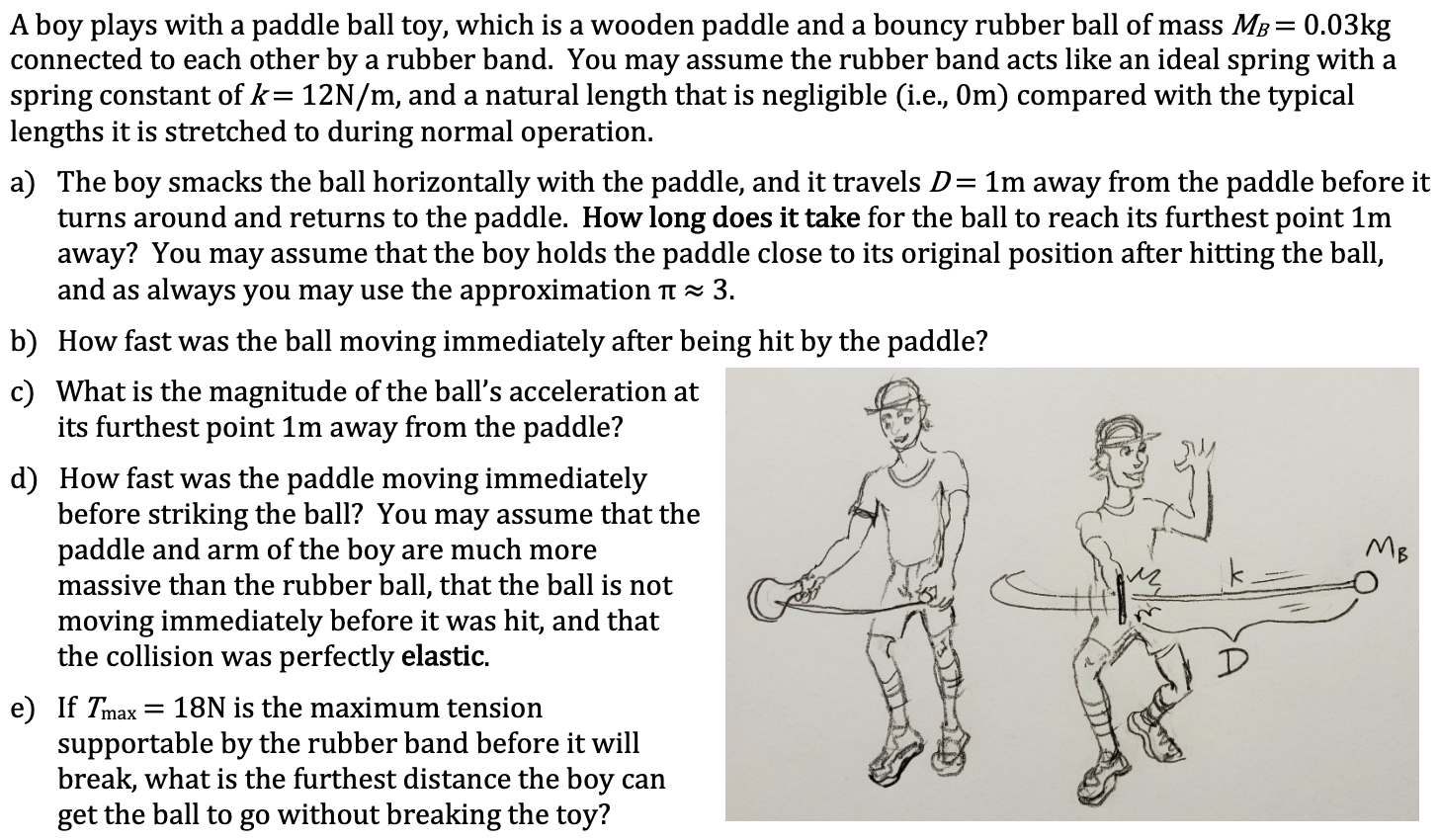0.03kg A boy plays with a paddle ball toy, connected to each other by a rubber band. You may assume the rubber band acts like an ideal spring with a spring constant of k= 12N/m, and a natural length that is negligible (i.e., 0m) compared with the typical lengths it is stretched to during normal operation. a wooden paddle and a bouncy rubber ball of mass MB a) The boy smacks the ball horizontally with the paddle, and it travels D= 1m away from the paddle before it turns around and returns to the paddle. How long does it take for the ball to reach its furthest point 1m away? You may assume that the boy holds the paddle close to its original position after hitting the ball, and as always you may use the approximation t × 3. b) How fast was the ball moving immediately after being hit by the paddle?
0.03kg A boy plays with a paddle ball toy, connected to each other by a rubber band. You may assume the rubber band acts like an ideal spring with a spring constant of k= 12N/m, and a natural length that is negligible (i.e., 0m) compared with the typical lengths it is stretched to during normal operation. a wooden paddle and a bouncy rubber ball of mass MB a) The boy smacks the ball horizontally with the paddle, and it travels D= 1m away from the paddle before it turns around and returns to the paddle. How long does it take for the ball to reach its furthest point 1m away? You may assume that the boy holds the paddle close to its original position after hitting the ball, and as always you may use the approximation t × 3. b) How fast was the ball moving immediately after being hit by the paddle?
Related questions
Question
Make sure to consider all parts of the problem with detail and accuracy. Please show your work and explain. Thank you!

Transcribed Image Text:0.03kg
A boy plays with a paddle ball toy,
connected to each other by a rubber band. You may assume the rubber band acts like an ideal spring with a
spring constant of k= 12N/m, and a natural length that is negligible (i.e., 0m) compared with the typical
lengths it is stretched to during normal operation.
a wooden paddle and a bouncy rubber ball of mass MB
a) The boy smacks the ball horizontally with the paddle, and it travels D= 1m away from the paddle before it
turns around and returns to the paddle. How long does it take for the ball to reach its furthest point 1m
away? You may assume that the boy holds the paddle close to its original position after hitting the ball,
and as always you may use the approximation t × 3.
b) How fast was the ball moving immediately after being hit by the paddle?
Expert Solution
This question has been solved!
Explore an expertly crafted, step-by-step solution for a thorough understanding of key concepts.
This is a popular solution!
Trending now
This is a popular solution!
Step by step
Solved in 3 steps with 3 images
